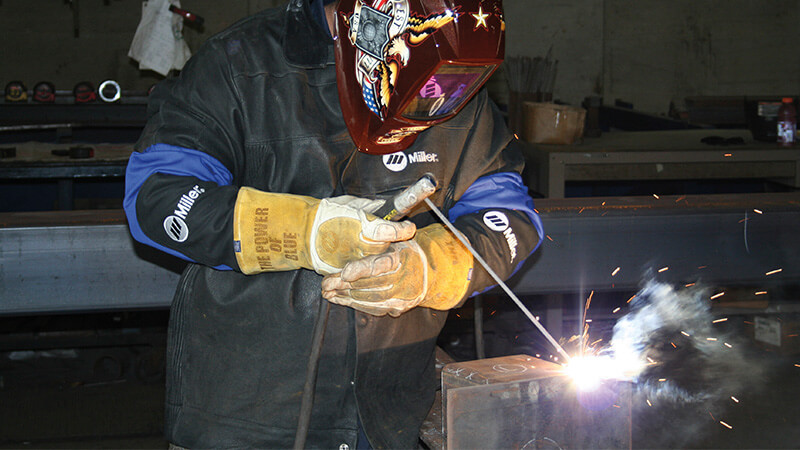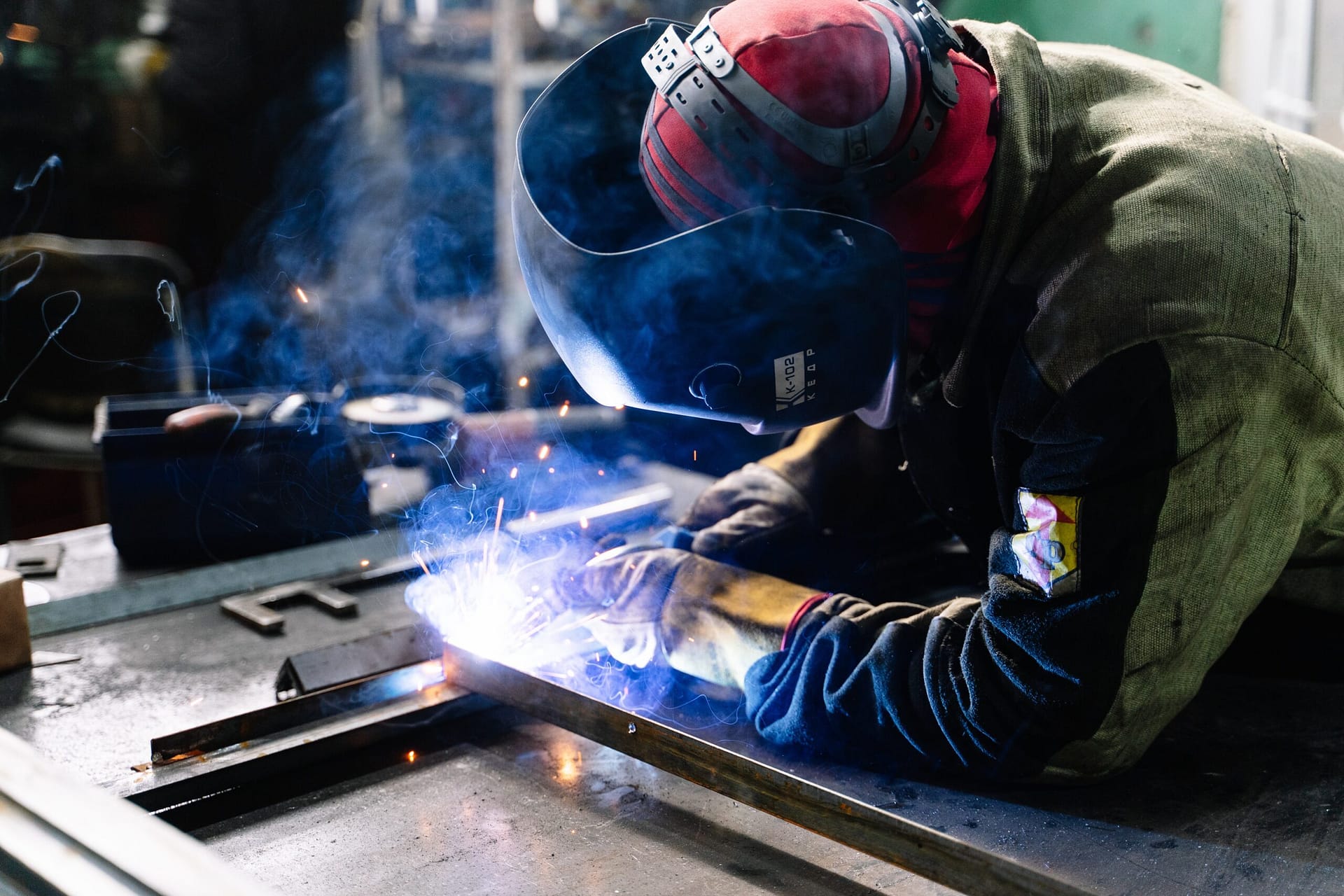Typical Welding Repair Work Issues and Just How to Address Them Effectively
Welding repair work commonly experience a variety of problems that can jeopardize the stability of the final item. Common issues consist of inadequate infiltration, porosity, and misalignment, to name a few. Each flaw offers unique challenges that need certain approaches for resolution. Understanding these problems is crucial for welders intending to boost their end results and abilities. This discussion will explore these typical welding repair problems and effective techniques to address them.
Poor Infiltration
Poor penetration occurs when the weld metal stops working to totally fuse with the base product, leading to weak joints and potential architectural failings. This concern usually originates from not enough heat input, inaccurate electrode angle, or incorrect welding speed. Welders might encounter insufficient penetration as a result of a miscalculation of the required parameters for a details product density or type. Additionally, contamination on the base product's surface area can hinder reliable bonding, intensifying the problem. To deal with insufficient penetration, welders ought to guarantee suitable setups on their equipment and preserve a tidy job surface area. Routine evaluation of welds is suggested to determine any deficiencies early, permitting timely improvements and the prevention of compromised structural integrity in welded settings up.
Porosity
Porosity is a typical problem in welded joints that materializes as tiny gas bubbles caught within the weld metal. This problem can endanger the integrity of the weld, resulting in minimized strength and possible failing under tension. Fabrication. Porosity commonly arises from contamination, moisture, or improper welding strategies, which permit gases to escape right into the liquified weld pool. To resolve porosity, welders need to ensure proper surface area prep work, preserve a clean working setting, and use ideal welding criteria. In addition, picking the right filler material and shielding gas can mitigate gas entrapment. Routine assessment and testing of welds can help recognize porosity early, guaranteeing prompt restorative activities are taken, thereby maintaining the top quality and reliability of the bonded structure
Misalignment
Misalignment in welding can occur from numerous variables, including incorrect configuration and thermal development. Comprehending the source is necessary for effective resolution. Several adjustment strategies are offered to realign parts and ensure architectural honesty.
Reasons for Misalignment
Welding imbalance frequently comes from a selection of underlying concerns that can compromise structural stability. One main cause is improper fit-up of parts prior to welding, which can cause gaps and irregular surface areas. Variations in thermal expansion throughout the welding procedure can also lead to distortion, especially if the materials being joined have various coefficients of expansion. Furthermore, poor clamping and fixturing might stop working to hold elements firmly in location, leading to activity during welding. Poorly conserved devices, consisting of welding makers and tools, may introduce incongruities in the weld bead, additional contributing to imbalance. Operator error, stemming from not enough training or experience, can additionally play a substantial function in developing misaligned welds.

Correction Techniques Available
Attending to misalignment effectively calls for a combination of corrective methods tailored to the details issues at hand. One common approach is the usage of jigs or components to hold parts in the correct position during welding, making sure constant alignment. In addition, pre-heating the materials can help in reducing distortion and boost fit-up. For considerable imbalance, mechanical adjustment techniques, such as making use of hydraulic jacks or clamps, can be used to deal with the position prior to welding. Post-weld heat therapy may likewise be essential to relieve stresses brought on by imbalance. Mindful inspection and modification throughout the configuration stage can protect against misalignment concerns from ending up being substantial issues, promoting a smoother welding process and improving overall architectural integrity.
Distortion
Distortion is an usual difficulty in welding that can emerge from various variables, including uneven heating and air conditioning. Recognizing the reasons for distortion is crucial for carrying out efficient avoidance techniques. Resolving this problem not only improves architectural honesty yet likewise improves the overall quality of the weld.
Sources of Distortion
When based on the extreme warm of welding, products commonly undergo adjustments that can bring about distortion. This phenomenon mostly occurs from thermal expansion and tightening throughout the welding procedure. As the weld area warms up, the product increases; upon air conditioning, it acquires, which can develop inner stress and anxieties. Additionally, uneven home heating across a workpiece can aggravate these stresses, causing warping or bending. The type of material additionally plays a significant role; metals with varying thermal conductivity and coefficients of growth may respond in a different way, leading to uncertain distortions. Moreover, poor joint layout and inadequate fixturing can add to imbalance during welding, boosting the likelihood of distortion. Comprehending these reasons is vital for efficient welding repair and avoidance approaches.
Avoidance Techniques
Effective avoidance techniques for distortion throughout welding emphasis on regulating warmth input and making certain proper joint style. Keeping a constant find more warmth input assists to decrease thermal expansion and tightening, which can bring about distortion. Making use of strategies such as pre-heating the work surface can likewise reduce the temperature gradient, advertising consistent home heating. Additionally, choosing appropriate joint designs, such as T-joints or lap joints, can boost security and reduce stress and anxiety concentrations. Implementing correct fixturing to secure the work surfaces in position additionally aids in preserving placement throughout the welding procedure. Staggered welding series can distribute heat much more evenly, preventing localized distortion. By applying these techniques, welders can significantly lower the likelihood of distortion and boost the general quality of their welds.
Fracturing
Splitting is a common problem experienced in welding repair work, often resulting from different elements such as incorrect air conditioning rates, material option, or insufficient joint preparation. The incident of splits can considerably jeopardize the integrity of the weld, resulting in possible failings during procedure. To resolve this issue, welders should initially evaluate the origin, making sure that products work and suitably picked for the specific application. Additionally, regulating the air conditioning rate throughout the welding process is important; rapid cooling can cause tension and result in breaking. Correct joint layout and prep work additionally add to reducing the risk. Executing these techniques can enhance weld high quality and toughness, inevitably reducing the likelihood of breaking in finished weldments.

Incomplete Combination
A substantial problem in welding repairs is incomplete blend, which occurs when the weld steel does not appropriately bond with the base product or previous weld passes - Belgrade Fabrication. This flaw can cause weak points in the joint, possibly endangering the integrity of the welded framework. Aspects contributing to insufficient blend consist of inadequate heat input, improper welding method, and contamination of the surface areas being signed up with. To resolve this concern successfully, welders ought to guarantee appropriate pre-weld cleansing and surface area preparation, in addition to readjust their welding parameters to achieve ample penetration and blend. Routine inspection during the welding procedure can also assist determine incomplete fusion early, allowing for timely corrective steps to enhance the total top quality of the weld
Overheating
While welding repair services can enhance structural stability, overheating provides a considerable challenge that can lead to product deterioration. Excessive heat throughout welding can change the mechanical buildings of metals, resulting in lowered toughness, increased brittleness, and bending. This sensation is particularly important in high-stress applications where structural dependability is extremely important. Determining overheating can butt weld involve aesthetic assessments for staining or distortion, as well as keeping an eye on temperature level during the welding process. To mitigate the dangers linked with overheating, welders must use appropriate strategies, such as managing warmth input, adjusting traveling speed, and making use of appropriate filler materials. Additionally, applying pre- and post-weld warmth therapies can assist bring back product residential or commercial properties and improve the overall high quality of the fixing, making certain long-lasting efficiency and safety.
Frequently Asked Questions
What Are the Usual Indications of a Welding Problem?

Exactly How Can I Examine My Welds for High quality?
To examine welds for quality, one can make use of visual inspections, ultrasonic screening, and radiographic techniques. Each strategy guarantees architectural honesty, recognizes issues, and confirms adherence to specified standards, inevitably improving the integrity of the bonded joints.
What Safety and security Precautions Should I Take While Welding?
When welding, one need to focus on security by putting on suitable personal protective equipment, making sure appropriate air flow, safeguarding combustible products away, keeping a clean work area, and recognizing environments to stop injuries and crashes.
Can I Repair a Weld Without Redesigning the Entire Joint?
Fixing a weld without renovating the whole joint is feasible, depending upon the damages (Montana Mobile Welding and Repair Belgrade Fabrication). Strategies such as grinding, including filler product, or making use of a welding process can successfully resolve specific imperfections while maintaining the bordering structure
What Devices Are Important for Efficient Welding Services?
Crucial tools for efficient welding repairs consist of a welding maker, wire brush, mill, safety gear, clamps, and filler products. Each tool plays a vital role in ensuring quality and safety and security throughout the repair procedure. Porosity typically develops from contamination, dampness, or improper welding methods, which allow gases to leave right into the liquified weld swimming pool. Inadequately conserved tools, consisting of welding machines and tools, may introduce incongruities in the weld grain, more adding to misalignment. When subjected to the extreme warmth of welding, products commonly undergo adjustments that can lead to distortion. Splitting is a common problem come across in welding repairs, typically resulting from various elements such as improper air conditioning prices, product Home Page selection, or inadequate joint preparation. A significant concern in welding fixings is incomplete combination, which happens when the weld steel does not sufficiently bond with the base material or previous weld passes.